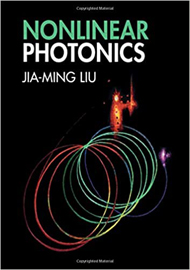
I highly recommend this comprehensive, self-contained, graduate- and senior-undergraduate-level textbook with its unique features and a pedagogical engineering approach.
Two chapters on electro-optic and all-optical modulation are exemplars. Rigorous derivations of theory require the use of the density matrix to calculate second- and third-order susceptibilities that are the foundations of a macroscopic development of a wide variety of nonlinear optical phenomena. The use of perturbation expansions to solve the equation of motion for the density matrix is developed together with their approximations and limitations.
The applications of theory to actual devices separate this book from others with similar titles. Examples are key devices to generate optical pulses, temporal solitons, waveguide modulators, interferometers, compression of chirped pulses and supercontinuum generation in optical fibers. The inclusion of problem sets, worked problems, key references, clear figures and summary tables of key equations and data is beneficial. The appendices list the symbols and notations contained in the book.
Review by Barry R. Masters, Fellow of AAAS, Optica, and SPIE.
The opinions expressed in the book review section are those of the reviewer and do not necessarily reflect those of OPN or its publisher, Optica (formerly OSA).
